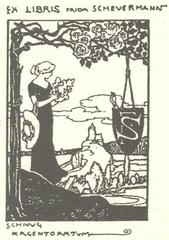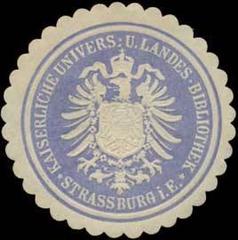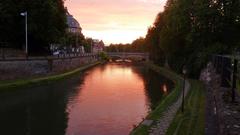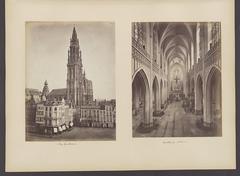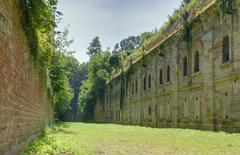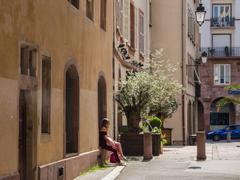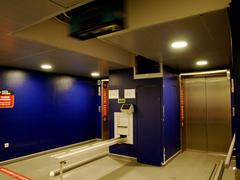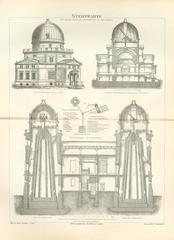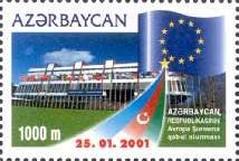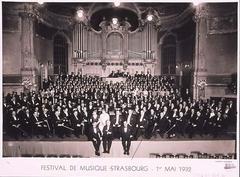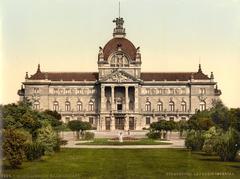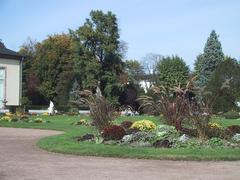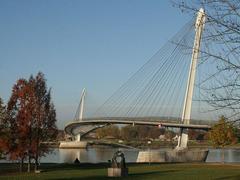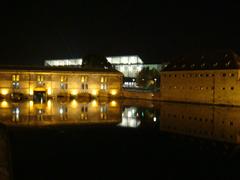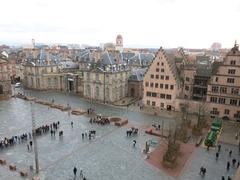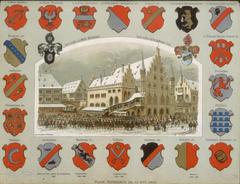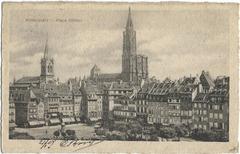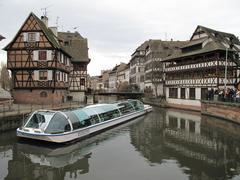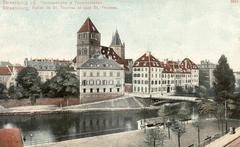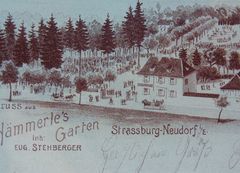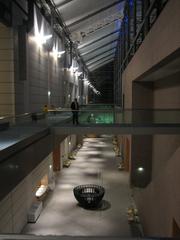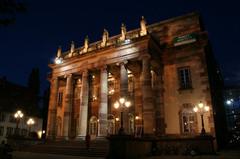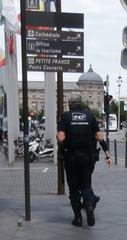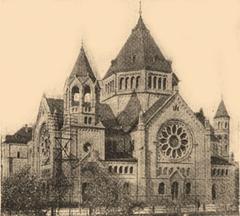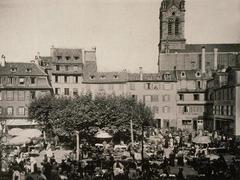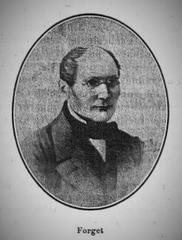Permanent Mission Of The Federal Republic Of Germany To The Council Of Europe
Visiting the Permanent Mission of the Federal Republic of Germany to the Council of Europe in Strasbourg, France: Visiting Hours, Tickets, and Travel Guide
Date: 04/07/2025
Introduction
Strasbourg’s European Quarter stands as a testament to post-war European unity and cooperation, hosting influential institutions dedicated to human rights, democracy, and the rule of law. At the heart of this district is the German Permanent Mission to the Council of Europe, Germany’s official diplomatic representation to one of Europe’s oldest and most significant intergovernmental bodies. Since West Germany’s accession in 1951, Germany has been a driving force in shaping the Council’s agenda and advancing European reconciliation. This guide offers detailed information for visitors, including history, cultural significance, practical tips, visiting hours, access protocols, and nearby attractions, ensuring an enriched experience in Strasbourg’s European Quarter (French Moments; Visit Strasbourg; German Mission).
Table of Contents
- Overview and Historical Context
- Germany’s Role in the Council of Europe
- The German Permanent Mission: Functions and Location
- Architectural and Urban Setting
- Visiting the European Quarter: Practical Information
- Visiting the German Permanent Mission: Hours and Protocol
- Visitor Tips and Accessibility
- Nearby Strasbourg Attractions
- FAQs
- Conclusion
- References
Overview and Historical Context
The Council of Europe was founded on May 5, 1949, by ten Western European countries as a direct response to the devastation of World War II. Strasbourg, a city marked by its Franco-German heritage, was chosen as the seat for its symbolic value—representing reconciliation and unity in Europe (Britannica; French Moments).
Germany’s Role in the Council of Europe
West Germany’s accession in 1951 was a significant milestone, underscoring its reintegration into the European community. Over the decades, Germany has:
- Championed human rights and democratic governance.
- Facilitated the Council’s expansion, especially after reunification, supporting Central and Eastern European members.
- Led and supported key initiatives, such as the European Convention on Human Rights and legal harmonization.
- Supported crisis response and humanitarian aid, notably in response to recent geopolitical challenges.
Germany continues to be one of the Council’s largest contributors, both financially and in terms of diplomatic engagement (strassburg-europarat.diplo.de).
The German Permanent Mission: Functions and Location
Primary Functions:
- Representing Germany in Council decision-making bodies (Committee of Ministers, Parliamentary Assembly).
- Negotiating and coordinating policy positions.
- Promoting human rights, democracy, and the rule of law.
- Facilitating cultural and educational exchanges.
Location:
The Mission is located within Strasbourg’s European Quarter, close to major institutions like the Council of Europe’s Palais de l’Europe, the European Parliament, and the European Court of Human Rights. The area is accessible by tram (Tram E, Boeklin/Lieu d’Europe stop) and is adjacent to green spaces such as Parc de l’Orangerie (Strasbourg Europe Walk; Citadines Eurometropole Strasbourg).
Architectural and Urban Setting
The Imperial Legacy: Neustadt
Strasbourg’s Neustadt district, developed during the German annexation (1871–1918), is a UNESCO World Heritage Site known for its grand boulevards and German imperial architecture such as Place de la République, Palais du Rhin, and St. Paul’s Church (French Moments; My Weekend in Alsace).
The Modern European Quarter
Postwar development in the European Quarter is marked by modernist architecture:
- Council of Europe Building: Designed by Henry Bernard, inaugurated in 1977.
- European Parliament (Louise Weiss): Completed in 1999, symbolizing ongoing European integration.
- European Court of Human Rights: Designed by Richard Rogers, opened in 1995.
The Permanent Mission’s building reflects modern diplomatic needs while harmonizing with this international context (Strafari; Postcards and Places).
Visiting the European Quarter: Practical Information
Key Sites
- Palais de l’Europe: Headquarters of the Council of Europe, known for its striking pink sandstone and glass façade.
- European Court of Human Rights: Notable for its contemporary design and role in safeguarding rights across the continent.
- European Parliament: A hub for legislative activity, featuring public tours and exhibitions.
Visiting Hours and Tickets
- Council of Europe: Open Monday–Friday, 9:00 AM–5:00 PM. Guided tours are available for groups (min. 15 people) with prior reservation. Admission is free (Visit Strasbourg).
- European Parliament: Offers public tours; check official sites for current schedules.
Accessibility
- The district is accessible by tram and bus; pedestrian-friendly with multilingual signage.
- Most buildings are equipped for visitors with reduced mobility.
Highlights
- The area is known for its landscaped gardens, especially Parc de l’Orangerie.
- Cafés and restaurants offer a blend of Alsatian, French, and German cuisine.
- Interactive family activities like the EuropeQuest trail are available (EuropeQuest).
Visiting the German Permanent Mission: Hours and Protocol
Opening Hours
- Monday to Friday, 9:00 am–12:00 pm and 2:30 pm–5:00 pm (strassburg.eu).
- Visits strictly by appointment; walk-ins are not permitted.
Access and Security
- Arrange your visit in advance; contact details are available via the Council of Europe and German Mission websites.
- Valid photo ID (passport or national ID card) is required.
- Security screening (metal detectors, bag inspection) is mandatory.
Who Can Visit
- Primarily for diplomats, academics, students, or groups with a professional interest.
- No public tours; occasional briefings or events may be available by prior arrangement.
- Routine consular services (such as visa or passport issues) are handled by the German Consulate in Strasbourg (germany.info).
Visitor Tips and Accessibility
- Dress Code: Formal or business-casual attire required.
- Conduct: Maintain decorum; photography inside the Mission is generally prohibited.
- Languages: German, French, and English are used; interpretation may be arranged in advance.
- Physical Accessibility: Facilities are barrier-free, with ramps and elevators.
- Plan Ahead: Early booking is advised, especially for groups or educational visits.
Nearby Strasbourg Attractions
- Strasbourg Cathedral: Masterpiece of Gothic art.
- Petite France: Picturesque historic quarter with half-timbered houses.
- Neustadt District: Explore German imperial architecture and UNESCO sites.
- Parc de l’Orangerie: Ideal for walks and relaxation (Little Holidays).
Frequently Asked Questions (FAQ)
Can I visit the German Permanent Mission without an appointment?
No. All visits require prior scheduling and approval.
Are guided tours available at the Mission?
Generally not, except for special events or prearranged briefings for groups.
Is the Mission wheelchair accessible?
Yes, with barrier-free access and elevators.
Where can I find more information on consular services?
Contact the German Consulate in Strasbourg or refer to the German Foreign Office.
What visa do I need to visit?
Non-EU visitors require a Schengen visa for entry to France (germany-visa.org).
Conclusion
The German Permanent Mission to the Council of Europe in Strasbourg is emblematic of Germany’s unwavering dedication to European unity, democracy, and human rights. While public access is limited due to its diplomatic function, the Mission’s location in Strasbourg’s European Quarter positions visitors at the crossroads of European history and contemporary international relations. Exploring the district’s institutions, participating in guided tours, and discovering nearby historical and cultural landmarks will provide a well-rounded understanding of Europe’s journey toward unity and peace. For the latest updates and visitor information, consult official sources and consider interactive resources such as virtual tours.
References and External Links
- French Moments: Strasbourg and Europe
- Visit Strasbourg: The Council of Europe
- NYU Law Global: Council of Europe
- German Permanent Mission to the Council of Europe
- Strasbourg Europe Walk
- Citadines Eurometropole Strasbourg: European Quarter
- French Moments: German Imperial District
- Strasbourg.eu: Council of Europe
- Germany.info: Consular Services
- German Foreign Office: Visa Service
- Germany Visa Information
- Little Holidays: Strasbourg
